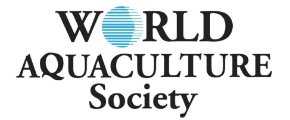ECHINOCULTURE IN GREECE: PRESENT STATUS & PERSPECTIVES.
Introduction
Sea urchins are considered a delicacy world wide and quite nutritious as the urchin roe (eggs) has a high percentage of carotenoids, fatty acids, vitamins and other anti-oxidant agents. Various edible species in Europe and around the world achieve good prices in European or Asian markets (Pantazis 2009; Kelly & Chamberlain 2010). A Presidential Decree signed on 28.02.2014 by the Greek Government, has regulated the sea urchin fishery in Greece in order to secure its sustainability [http://www.minagric.gr/index.php/el/home-2/89-greek-content/2010-07-14-10-03-42/grafeiotypou/press/2218-dt280214a]. It is obvious that the sea urchin fishery in Greece is threatened by over-depletion of the wild stocks and therefore there is a need for a more systematic culture approach of the species.
Materials and Methods
In 2013 the Innovation and Business Unit (IBU) of the University of Thessaly [www.moke.uth.gr] has decided to investigate the potential of sea urchin culture in Greece and provide an appropriate business plan for its development. Based on international experience and national research experience (Pantazis et al. 2008; Pantazis 2009) and by recruiting experienced business developers and financial advisors, the IBU has produced a sound business plan with the title "Integrated and Sustainable Sea Urchin culture in Greece". This business plan has been adopted by various entrepreneurship events and industrial organizations [http://sev4enterprise.org.gr/epixeirimatikotita/]. On January 2016, this sea urchin development plan has been awarded a special distinction at the Blue Growth Event [http://www.protothema.gr/city-stories/article/546432/kainotomodas-sti-thalassa/ ] organized by the "Blue Growth" Innovation hub [http://bluegrowth.gr/], the municipality of Pireaus, Greece and the Aephoria net [http://www.aephoria.net/].
Results and Discussion
During the summer in Greece, sea urchin eggs are sold in restaurants at a retail price of 6-7 euros per ration [http://mychania.blogspot.gr/2007/01/blog-post_4235.html], which equals to approximately 40 euros per kilo of fresh sea urchins. An extensive investigation at various local restaurants in Crete, Central Kyclades and Magnissia prefectures has revealed that a commercial sea urchin production unit could easily distribute 100 tons of fresh sea urchins annually in the Greek markets. On the other hand there are no sea urchin aquaculture producers in Greece. The existing aquaculture Greek fish producers do not fall within the "competitors' category" as they produce animal protein to meet the basic edible needs of human population, whereas sea urchins are a luxury food, addressing niche and specialized markets (seafood restaurants, oriental cuisine, catering for air carriers and sea cruisers, luxury hotels, etc). The business team consists of specialized scientists which hold the know-how for the integrated sea urchin production. Furthermore, the location of the farm guarantees the provision of good quality seawater and the viability of the selected sea urchin species (Paracentrotus spp. Echinus spp.), as they are endemic and already found in this geographical area, characterized by large natural populations. The farm location guarantees the market distribution of the product at a reasonable cost. In addition the production process will utilize the concept of Integrated Multi-Trophic Aquaculture (IMTA) which minimizes the environmental fingerprint of this aquaculture operation. Last but not least, are the ideal meteorological conditions of the area which guarantee the achievement of the commercial size of the final product at a reasonable production time frame.
References
Kelly, M.S., Chamberlain, J. 2010. Recent Advances in sea-urchin Aquaculture and enhancement in Scotland and Ireland. Bull. Aquacul. Assoc. Canada 108-1,pp. 23-29.
Pantazis, P., 2009. The culture potential of Paracentrotus lividus (Lamarck 1816) in Greece: a preliminary report. Aquaculture International 17(6), pp545-552 (DOI 10.1007/s10499-008-9223-5).
Pantazis, P., Boutsouki,E., Douros, P. 2008. Growth and survival of the sea urchin Paracentrotus lividus (Lamarck 1816) in a mussel Mytilus galloprovincialis (Lamarck 1797) farm environment. Aquaculture America 2008, World Aquaculture Society, Feb 9-12, 2008, Lake Buena Vista, Florida.










